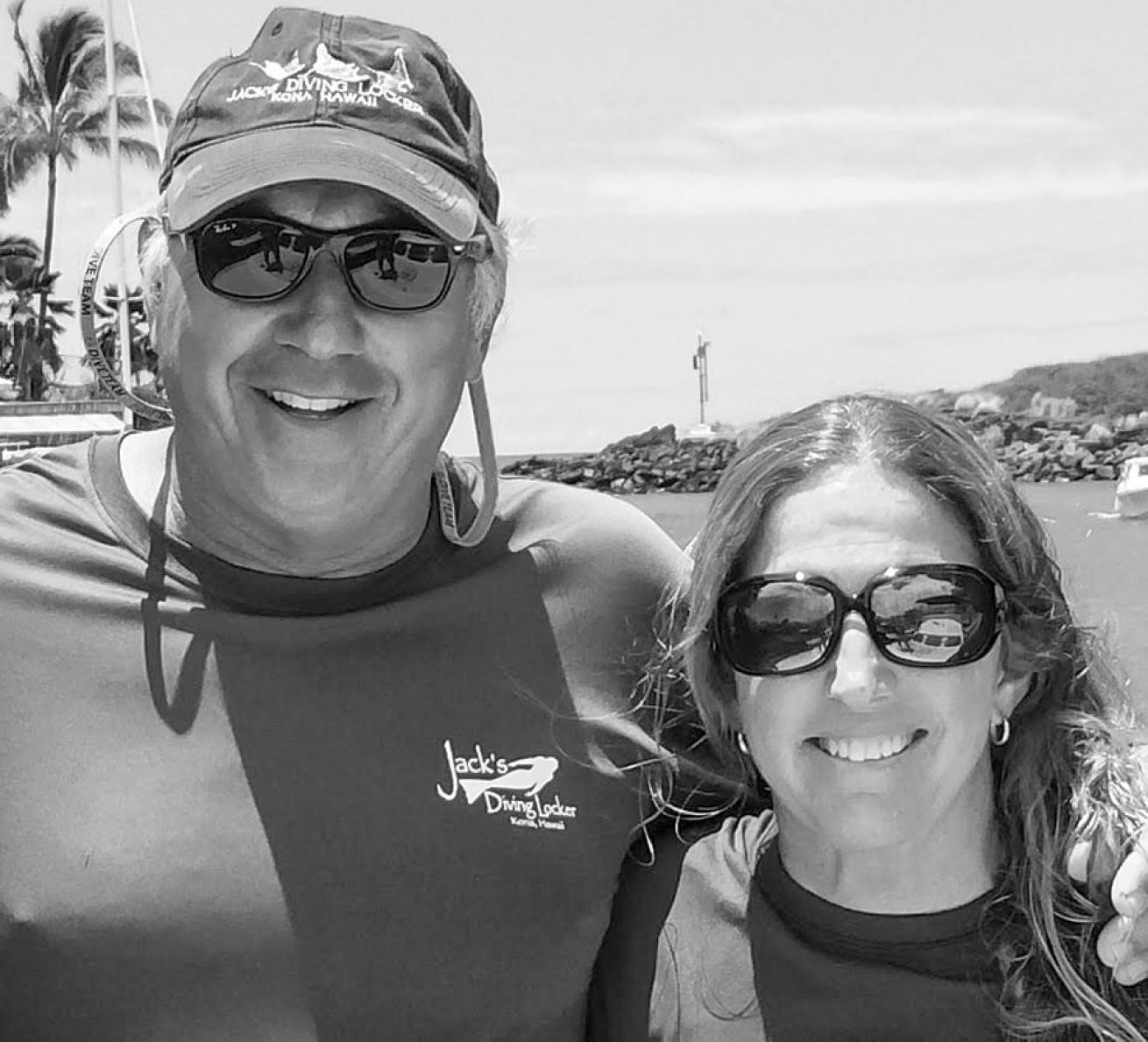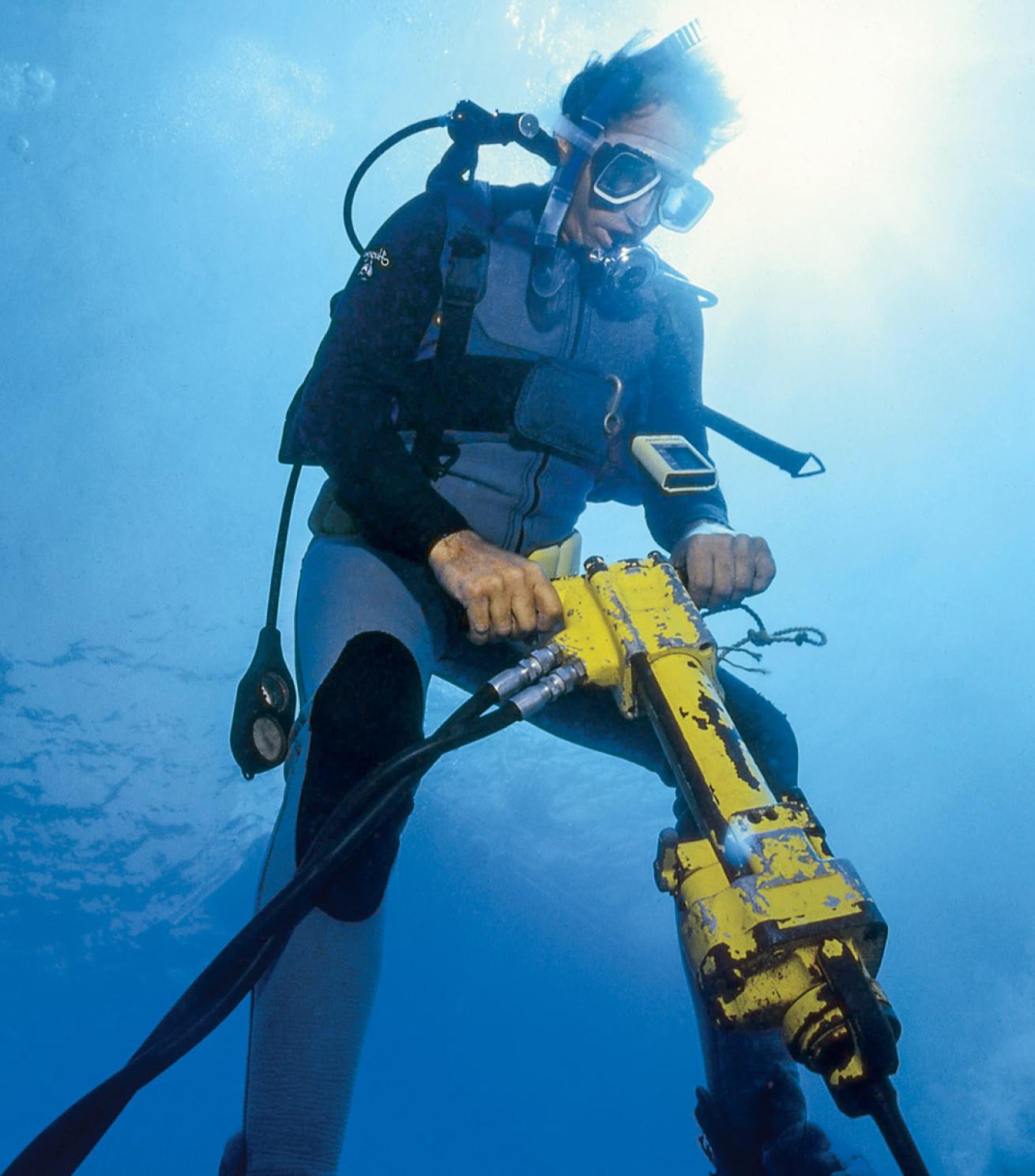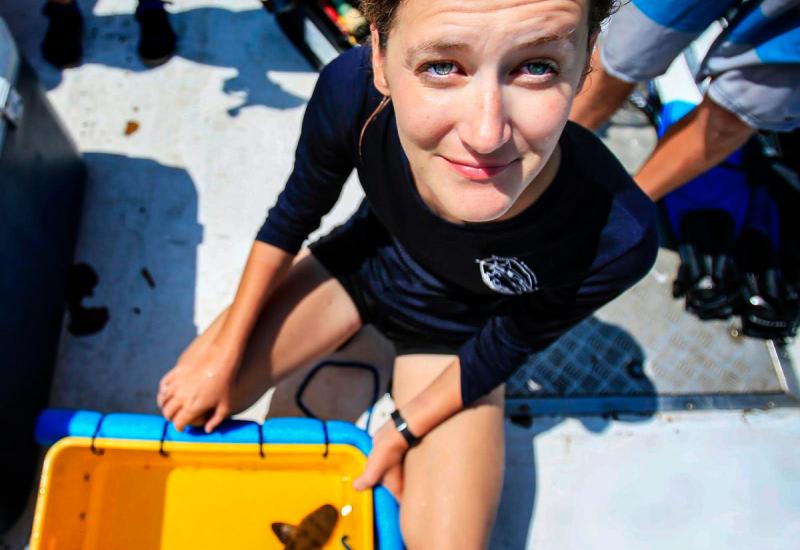Jeff and Teri Leicher Named Scuba Diving Sea Heroes

Jeff and Terri LeicherScuba Diving's Sea Heroes, Jeff and Terri Leicher.
Year certified: Jeff, 1973; Teri, 1978
Age when certified: Jeff, 19; Teri, 22
Certification level: Both are PADI MSDT Instructors.
Words to live by: “I like to leave a place a little better than I found it.”
It’s no coincidence that Teri and Jeff Leicher share a desire to make the world a better place by doing what you can, where you can. The couple, who own Jack’s Diving Locker on the Big Island of Hawaii, have been instrumental in establishing a system of mooring buoys throughout the state that protect Hawaii’s coral reefs from lethal boat-anchor strikes. Whether lobbying governments for permission or raising funds or heading underwater with a jackhammer, the Leichers don’t shrink from getting their hands wet in any way that will help solve the problem. For that they are our July Sea Heroes.
Tell us about the origins of Hawaii's day-use mooring buoys.
Jeff Leicher: Teri and I moved from Oahu to Kona in 1982 and immediately noticed how much healthier the reefs were in Kona, compared to the more heavily used reefs on Oahu. Although there were only about three small dive companies using the Kona sites, it was obvious that this was going to grow. We asked Teri’s father, George A. Wilkins, what it would take — legally and technically — to install permanent moorings. George was a marine scientist with the University of Hawaii Department of Geophysics, and he knew of a method of drilling into the seafloor and cementing permanent anchors. Partnering with the university and the state, we began working on getting permits to allow us to install the first 46 buoys along the Kona coast.
Teri Leicher: The moorings have been hugely successful, and the program has since expanded to include well over 200 dive sites statewide.
What’s been the greatest challenge?
JL: Although the state believes in protecting coral reefs, the rules and laws that pertain to legally installing a mooring are a bureaucratic nightmare. It can take three to 10 years to obtain a permit.
TL: Since 1986, I have been a liaison between Malama Kai Foundation and Hawaii’s Department of Land & Natural Resources. [Created to support the day-use mooring project, MKF today raises funds and implements a variety of projects to conserve Hawaii’s marine resources and educate people about those resources.] This involves legislating for funding, traveling statewide for hearings, and helping to push paperwork though state and federal agencies. Many dive and snorkel operators, as well as island residents and visitors, have come together statewide to support day-use moorings. It is frustrating that the process takes so long, but the reward makes it worthwhile. It really does take a village to make a mooring happen.
What’s the biggest challenge you’ve faced?
JL: Funding. Each mooring installation costs around $1,500 just in hardware, even with the work done by volunteers. Then there’s the enormous task of maintaining moorings so they’re safe. Most of the money has come from donations by generous visiting divers. We hope and believe that the state will begin to establish carrying capacities for our underwater resources, limit use by granting (or withholding) permits, and provide sufficient moorings and maintenance to accommodate those users without the need for dropping anchors. Coral has enough threats to worry about — climate change, sunscreen, etc. — without having to survive a carelessly thrown anchor.
What's been your most satisfying moment?
JL: In the earliest days of the program, while awaiting a written permit, we drilled 92 holes after receiving a verbal go-ahead from authorities. (Lesson: Get everything in writing.) We were threatened with a $92,000 fine and potential jail time. At a public hearing before the state land board, Jerry Garcia — a diver, great friend and leader of the Grateful Dead — testified as a “typical diving tourist” and encouraged the state to “make yourselves look good and just approve this thing.” The news cameras were rolling, and within a few days we had our permit. At the same hearing, the head of the state DLNR offered to pay the fine if one was assessed, and a state representative claimed she had drilled the holes, since she was immune from prosecution. We left the hearing with a huge burden lifted.

Jeff LeicherJeff Leicher works an underwater drill in preparation for installing a mooring buoy on the Kona coast in the late 1980s.
What's next for you?
JL: Thanks to the irresistible forces of nature, there will always be mooring maintenance to do. And thanks to the increasing popularity of Kona’s Manta Ray Night Dive, we’re going to need some more moorings. We’re also happy to share what we’ve learned with other parts of the world where anchoring is a threat.
How can divers help?
JL: To learn more about the program or make a donation, visit Malama Kai’s website, malamakai.org. Anyone can adopt a buoy.
TL: Protecting our environment is everyone’s kuleana (or responsibility). It is what we need to do, not only for future generations — our own lives are at risk if we don’t start now. No matter where you live, get involved with some sort of initiative to protect our planet. Start with recycling in your own home, then branch out.
JL: If you are diving somewhere such as Bonaire where a park fee is charged, and that fee goes to pay for mooring maintenance, pay it happily and proudly. They are protecting what you have come to enjoy. Aloha!
Each Sea Hero featured in Scuba Diving receives a Seiko Prospex Automatic SRPC07 watch worth $525. For our December issue, judges select a Sea Hero of the Year, who receives a $5,000 cash award from Seiko to further his or her work. Nominate your own Sea Hero here.










